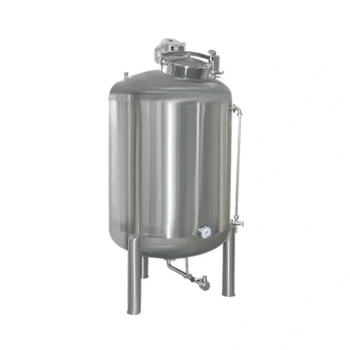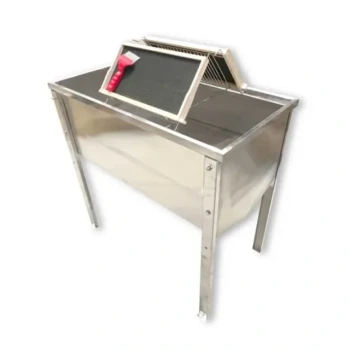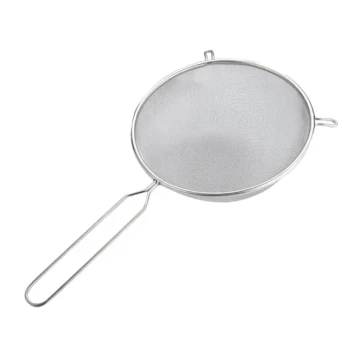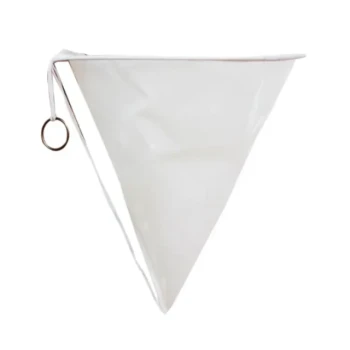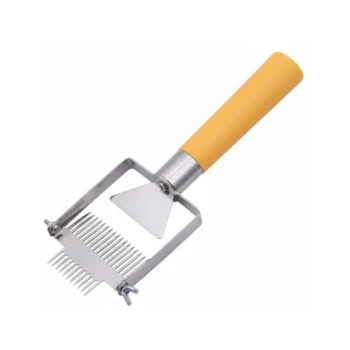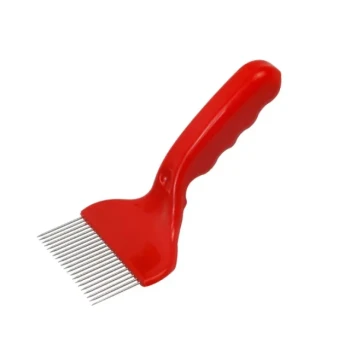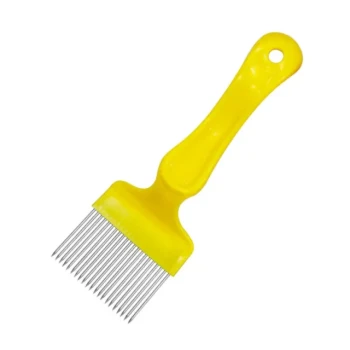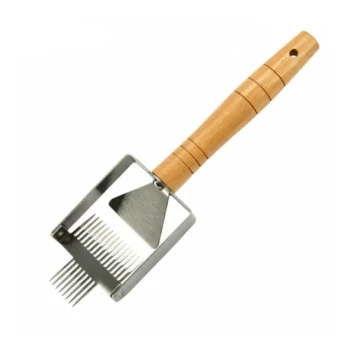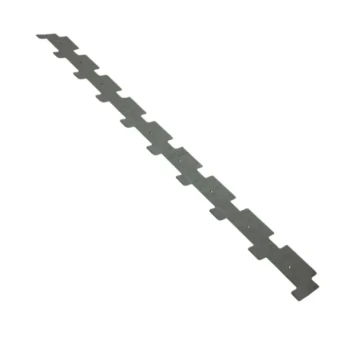The standard recommendation for settling honey is a minimum of 48 hours. This two-day period is designed to allow the thousands of tiny air bubbles introduced during extraction to rise to the surface, along with any remaining fine particles of wax or hive debris. The result is a crystal-clear product ready for bottling.
The 48-hour guideline is a reliable starting point, but the true goal is achieving honey clarity. The optimal settling time is not a fixed number; it is a function of honey viscosity, which is primarily dictated by temperature and the honey's floral source.
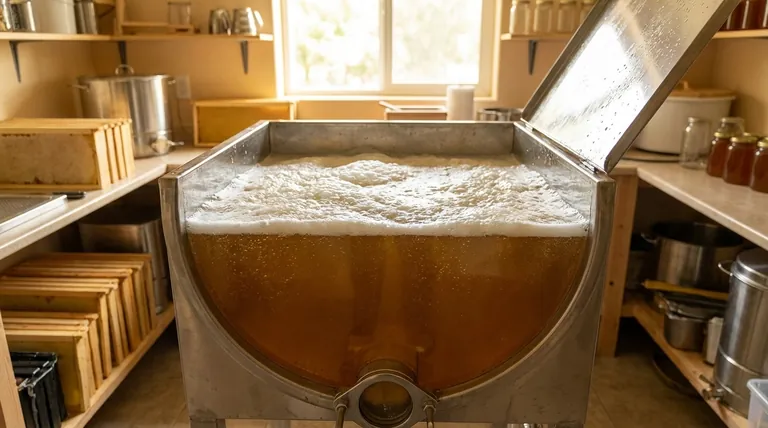
The Two Primary Goals of a Settling Tank
A settling tank, or bottling tank, serves two simple but critical functions in post-extraction processing. Both rely on the principle of gravity to clarify your final product.
Removing Trapped Air Bubbles
The process of spinning honey in an extractor and pumping it through filters forcefully introduces a significant amount of air. This results in countless microscopic bubbles suspended throughout the honey, giving it a cloudy or milky appearance.
Letting the honey rest undisturbed allows these bubbles, which are less dense than the honey, to slowly rise to the top. They gather on the surface as a layer of foam, which can then be easily skimmed off before bottling.
Separating Fine Particulate
While you should always pass your honey through a primary filter or strainer to remove large pieces of wax and hive debris, this initial pass won't catch everything.
Extremely fine particles of wax, pollen, and other microscopic matter can remain suspended. Over the settling period, these particles will either rise to the surface with the wax or sink to the bottom, ensuring they don't end up in your final jars.
Key Factors That Influence Settling Time
The 48-hour rule works well for average honey in average conditions. However, your specific situation may require more or less time.
Honey Viscosity
Viscosity is a measure of a fluid's resistance to flow—in simple terms, its thickness. Thicker, more viscous honey will take significantly longer to settle because air bubbles and particles move through it more slowly.
Honey from different floral sources has different natural viscosities. For example, clover or alfalfa honey is often thin and will clarify quickly, while honey from sources like heather can be almost gel-like and require much more time.
Ambient Temperature
Temperature is the most critical factor you can control. Honey becomes much less viscous when it's warm. A warm room dramatically accelerates the clarification process.
Settling honey in a room at 80-90°F (27-32°C) may result in a clear product in just 24 hours. Conversely, honey in a cool basement at 60°F (15°C) will be very thick and may need three days or more to settle properly.
Understanding the Trade-offs
While settling is a straightforward process, making the wrong judgment call on timing can impact your final product.
The Risk of Rushing the Process
Bottling honey too soon is a common mistake driven by impatience. If the air bubbles have not fully risen, the honey will appear cloudy in the jar.
Over time, this air will eventually collect at the top of the jar, forming a noticeable foam ring that can be unappealing to customers. This can also trap a fine ring of wax particles, affecting the product's appearance.
The Risk of Waiting Too Long
There is little risk in letting honey settle for an extra day or two, especially if the tank is sealed. The primary concern is that some types of honey are prone to rapid crystallization.
If you let raw honey sit for an extended period, it may begin to crystallize in the settling tank, making it much more difficult to bottle without reheating.
Determining Your Ideal Settling Time
Use the 48-hour rule as your baseline and adjust based on your specific conditions and goals.
- If you are working in a warm environment (above 75°F / 24°C): Your honey will settle much faster, so you can begin checking for clarity after the first 24 hours.
- If your honey is naturally thick and viscous: Plan for a longer settling period of at least 72 hours and consider placing the tank in a warmed room to decrease viscosity.
- If your primary goal is maximum clarity for sale or competition: Always wait a minimum of 48 hours and visually inspect the honey before bottling, skimming the surface immediately beforehand.
Ultimately, patience is the key to producing beautifully clear honey that reflects the quality of your work.
Summary Table:
| Factor | Effect on Settling Time | Recommendation |
|---|---|---|
| Standard Time | Baseline for average honey | Minimum 48 hours |
| High Temperature (>75°F / 24°C) | Decreases time | Check after 24 hours |
| Low Temperature (<60°F / 15°C) | Increases time significantly | Allow 72+ hours |
| Thin Honey (e.g., Clover) | Decreases time | 24-48 hours |
| Thick Honey (e.g., Heather) | Increases time | 72+ hours, consider warming |
Produce crystal-clear honey consistently with the right equipment from HONESTBEE.
As a trusted wholesale supplier for commercial apiaries and beekeeping equipment distributors, we provide the high-quality settling tanks, filters, and extraction systems you need to optimize your entire honey processing workflow. Let our experts help you select the perfect equipment to maximize efficiency and product quality.
Contact HONESTBEE today for wholesale pricing and expert advice tailored to your operation's scale.
Visual Guide
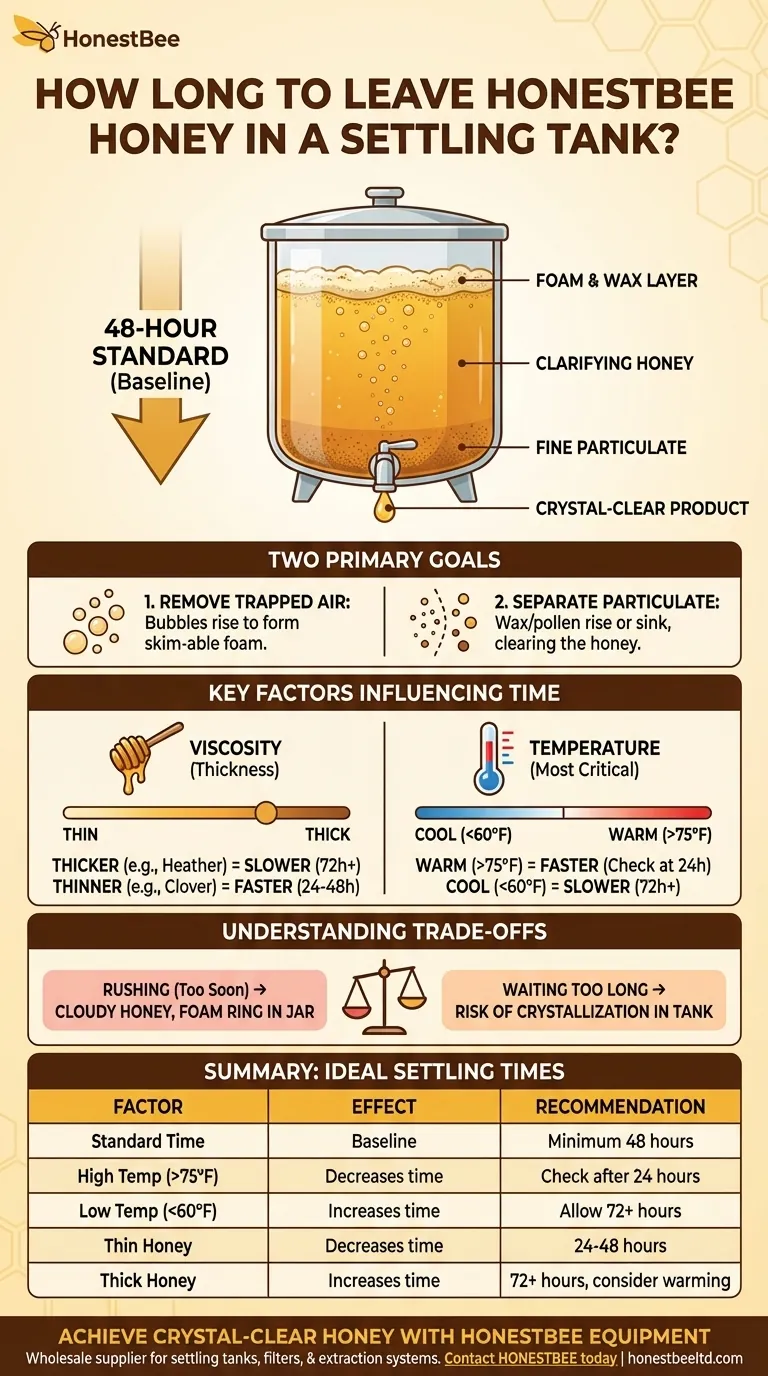
Related Products
- Stainless Steel Honey Storage Tank with Lid for Honey
- Professional Honey Storage Tank with Agitation System
- Stainless Steel Honey Storage and Settling Tank with Double Strainer
- Stainless Steel Heated Honey Tank Warming Heating Tank
- Stainless Steel Uncapping Tank with Stand and Strainer
People Also Ask
- What type of tank is used in the honey drying process? Master Gentle Moisture Removal for Premium Honey
- How long should honey settle in settling tanks? The 48-Hour Rule for Perfect Clarity
- How long to leave honey to settle before bottling? Achieve Perfect Clarity in 48 Hours
- What is the optimal temperature for honey crystallization? Control Texture for Liquid or Creamed Honey
- How do honeybees generate heat during winter? The Superorganism's Survival Strategy

